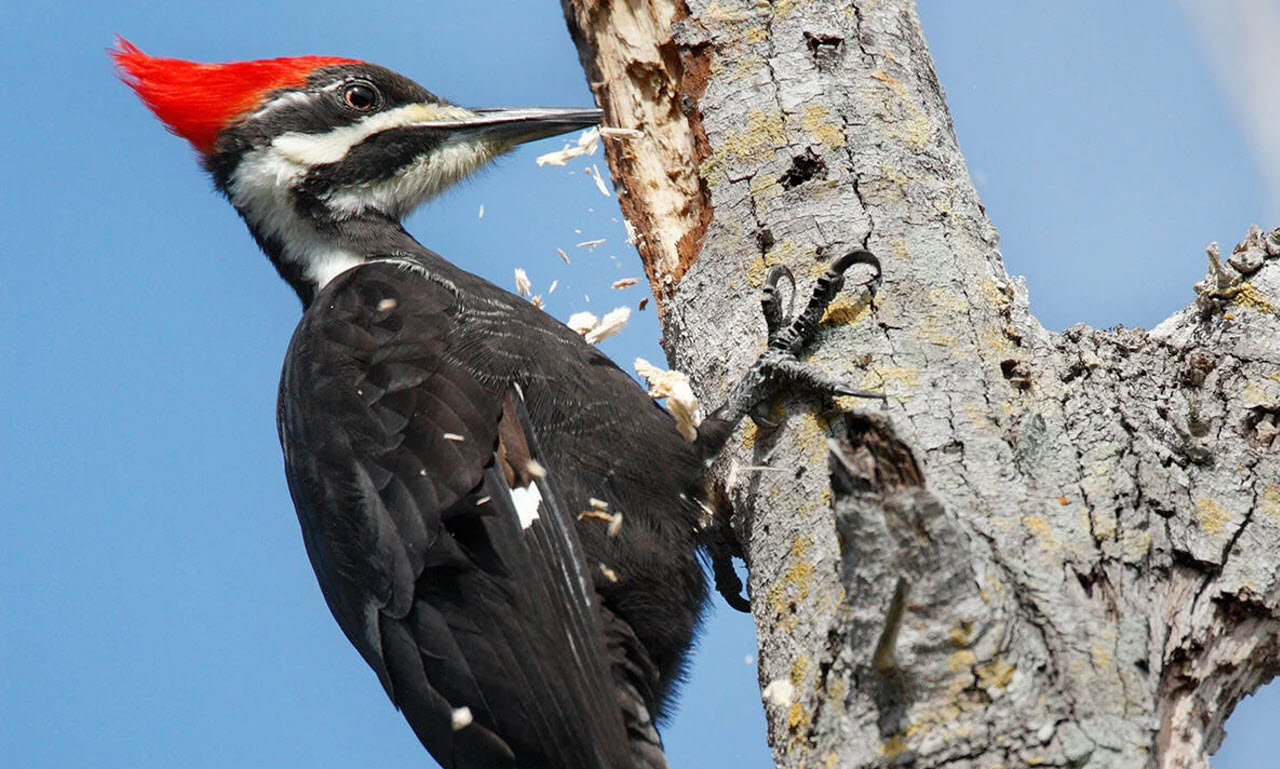It’s always interesting to watch birds and everything they are able to do. One interesting type of bird is the woodpecker, and many are out there.
Woodpeckers do differ from each other in the way that they look, but they all tend to have one thing in common, they like to peck on wood to get a nice meal. This leaves many people wondering why they don’t get brain damage or headaches from all of that knocking.

It’s good to know about the anatomy of the woodpecker, as it can help to show you why they don’t get a headache when they do what they do. As far as their tongues are concerned, they are long and narrow and have many barbs that allow them to drag insects from the inside of the wood to the surface.
The saliva of woodpeckers is sticky, so they can capture insects very easily. It’s a combination of the two that really allows them to feed to.
In addition, the base of the tongue has two horns that extend from the side and backward, where they are attached. The horns (hyoid bone) are made up of a combination of cartilage and bone, and in the woodpecker, they extend further back than in many other birds.
When they push the hyoid bone forward, it allows the tongue to extend and stretch much further than other birds. They also have a tongue that goes out a lot further than the bill.

As far as the storage of the tongue is concerned, it isn’t a problem for a woodpecker. If the rear of the skull, the Hyoid horns crossover below the skin rather than going underneath the skull. It’s only connected and moves forward when it’s needed.
Some woodpeckers will eat primarily insects, but a few species, including the redheaded woodpecker, will eat fruit.
Clickers are a unique type of woodpecker that have a lot of sticky saliva and a flat tone. They eat a lot of ants, and it is the combination that makes it possible.
Pileated woodpeckers have shorter tongues, and they usually dig into the tree to get carpenter ants.
Sapsuckers, on the other hand, have short tongues with bristles on the end that are similar to a brush. They suck sap, as the name would suggest.
When a woodpecker drills into a tree, they usually do it in a very organized fashion. They don’t typically experience brain damage or probably headaches because of the way that there anatomy is adapted to what they do.
The adoption is actually the hyoid bone that wraps around the skull of the woodpecker and prevents the brain from slapping against the skull. It’s been estimated that the pressure put on the brain of a woodpecker is less than 60% of what is necessary to give a concussion.
Now you know
